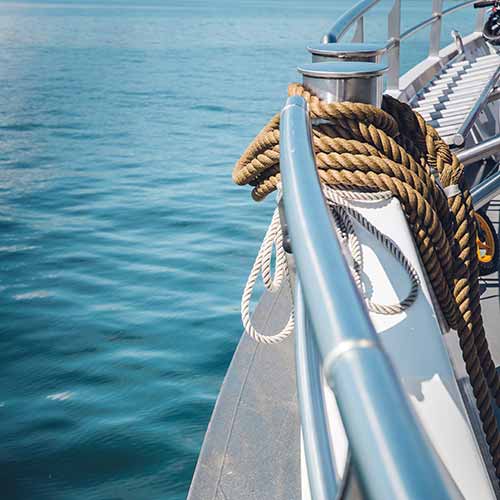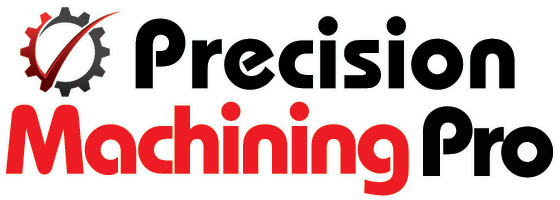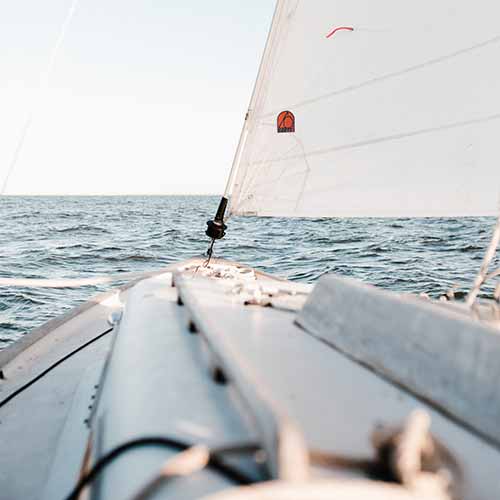CNC machining of Sailing boat parts – Advanced Manufacturing for Modern Marine Craft
CNC machining of sailing boat parts has assisted the sailing industry to come a long way from its historical roots of manual construction using hand tools. Today, computer numerical control (CNC) machining dominates the manufacturing of boat parts, enabling higher precision, quality, and customization than ever before. This transition to advanced CNC routers and machines has revolutionized boat building.
A Brief History of Boat Building and Transition to CNC Machining of Sailing Boat Parts
For thousands of years, boats and ships were built by hand using simple tools. From dugout canoes by indigenous populations to wooden sailing ships traversing the oceans for trade, marine vessels were crafted using intensive manual labor. Even into the 20th century, boat construction relied on techniques that had changed little over centuries or even millennia.
The roots of CNC machining can be traced back to the Industrial Revolution when factories began using steam power and then electrical power to automate production. However, the widespread adoption of CNC technology for boat part manufacturing didn’t truly take hold until the 1970s and 80s. This ushered in major gains in precision, repeatability, and complexity over manual methods.
Early CNC routers enabled boat designers to cut plywood panels, assemble wooden hull shapes, and craft masts and other structures that were stronger, lighter, and more sophisticated. No longer constrained by the limitations of hand tools and artisanal woodworking, CNC opened new horizons.
Nowadays CNC machining is integral to essentially all boat construction, including small pleasure craft, high-performance racing yachts, immense cargo ships, and everything in between. From cutting sheets of plywood and composite materials to the creation of final precision components, CNC machines handle every step.

Overview of CNC Machining Processes for Sailing Boat Building
CNC routers and machines bring computerized numerical control to a variety of manufacturing processes – cutting, milling, routing, chamfering, drilling, and more. Here’s a quick introduction to key CNC machining capabilities applied in boat part manufacturing:
Cutting – Using rotary cutters, CNC routers precisely cut panels of wood, aluminum, and composites to produce curved 2D shapes. Modern 5+ axis CNC allows cutting complex 3D forms.
Routing – Rotary bits carve out material to create routed channels, indentations, holes, and recessed spaces with extreme consistency.
Chamfering and Inlay – Angled cuts (chamfers) neatly finish the edges of boat parts. Inlay involves first routing out an area and then inserting separate decorative material.
Engraving – Detail markings, labels, and hatch patterns are applied to finished boat components via CNC engraving bits.
Drilling – CNC machines accurately drill holes for fasteners, hardware, rigging, plumbing, wiring, and electronics throughout a vessel.
These fundamental CNC processes enable everything from the rough cutting of sheet materials to the fabrication of specialized fittings and custom boat hardware.
Key CNC Machines for Boat Building and CNC Machining of Sailing Boat Parts
A variety of CNC machine types have specialized roles in marine industry manufacturing:
5-Axis CNC Routers – The most advanced routers offer 5-axis control (3 linear axes, 2 rotary axes). This enables angled cutting and machining of complex curves across multiple planes. Perfect for sculpting hull Molds, keels, and rudders.
Nested Base CNC Machines – Made for high-volume production, these have a flat cutting bed, and material sheets are placed in optimized “nested” layouts to maximize yield. Ideal for cutting kits of plywood panels and composite materials.
Industrial CNC Mills – Large CNC milling machines have tremendous versatility from the rough cutting of thick materials to precision finishing of parts like winches, turnbuckles, cleats, pulleys, and marine hardware.
CNC Plasma Cutters – High-powered plasma torches cut through thick steel plates used to fabricate strong structural components of ships and workboats.
Software for Marine CNC Machining
Behind every CNC machine is CAD and CAM software that controls the machining. Here are the leading options used from boat part design to production:
CAD Software – Computer-Aided Design programs like SolidWorks, Rhino, and AutoCAD are used to model boat components, hulls, decks, and other parts. This digital design data guides CNC machining.
CAM Software – Computer Aided Manufacturing software takes CAD models and generates toolpaths for CNC routers to follow. This includes programs like FlexiCAM, Alpha CAM, and Mastercam tailored for boat-building needs.
Nesting Software – To manufacture kits for plywood composite boat building, nesting programs like FlexiNEST optimize panel layouts. This maximizes material usage and minimizes waste.
Advanced software paired with precision 5-axis CNC routers equates to cutting-edge boat construction capabilities.
Benefits of CNC Machining for Sailing Boat Parts and Marine Applications
The transition to CNC machining delivers major benefits versus historical manual methods:
Extreme Precision – CNC routers provide tight tolerances down to thousandths of an inch, essential for hydrodynamic structures.
Higher Productivity – CNC machines work faster than human craftsmen, increasing boat yard manufacturing throughput.
Enhanced Customization – Custom boat parts are practical with easy CAD/CAM design modifications before production.
Improved Consistency – CNC automation eliminates variance across production runs and end products.
Increased Complexity – Multi-axis CNC capabilities facilitate complex curved geometries impossible manually.
New Materials – From advanced composites to exotic alloys, CNC enables working with a much wider material range.
Innovation Opportunities – Software and machine flexibility foster innovation in boat design itself.
These capabilities make CNC machining a key underlying technology advancing the entire marine industry.
CNC Machining Processes for Common Boat Parts
Drilling down, here is how some typical boat components are manufactured using CNC:
Hulls and Decks – hull surfaces and deck molds are cut from foam using 5+ axis CNC for smooth organic shapes and then covered in fiberglass composites.
Rudders – shaped with precision taper and curves by trimming foam on a 4/5 axis router then encapsulated in epoxy and composites.
Masts – carved from aluminum on a large CNC mill achieving fine aft and fore tapers. Holes are CNC drilled for hardware.
Booms – formed by routing thick marine plywood into a long hollow triangle and coated to withstand ocean elements.
Hatches and Ports – hatch outer trim routed from quality teak; acrylic windows CNC cut to match the curved opening.
Railings and Poles – stainless alloy tubing bent into gracefully shaped deck rails; anchoring poles CNC turned on a metal lathe.
And thousands more fittings, fasteners, winches, gears, steering systems, and electronics housings rely on advanced CNC factory machining.
Transitioning to CNC Machining of Sailing Boat Parts – Considerations
Given the tremendous advantages, marine companies are wise to embrace CNC machining, but the transition doesn’t happen overnight. Here are key considerations:
Steep Learning Curve – CNC software and hardware bring challenges in their complexity. Operators require extensive training to leverage 5-axis capabilities.
Software Investment – Boat design transitions from physical templates to digital CAD requiring new software expertise. CAM software is also critical.
Equipment Costs – Industrial CNC machines have significant upfront price tags and facility requirements for power, foundations, etc.
Proving Reliability – Any production glitches from finicky CNC hardware or software bugs can setback operations. Redundancy key.
For many builders, outsourcing CNC machining of sailing boat parts to a custom marine CNC shop is the easiest path forward. This provides ready access to advanced capabilities without major investments.
Over time, bringing machining in-house allows for greater quality control, responsiveness, and customization. The most advanced boat builders ultimately integrate their in-house 5-axis CNC cell.
The Future of CNC Machining of Sailing Boat Parts
Continual CNC machining developments promise exciting future innovations:
Bigger and Faster – Ever more powerful CNC routers tackle thicker, stronger composites, and new alloys at higher production speeds.
Improving Accuracy – Precision enhancements allow tighter tolerances and better surface finish quality.
Smarter Software – AI-based CAD/CAM algorithms semi-automate complex processes from dynamic nesting to toolpath optimization.
Customized Production – Mass customization via CNC enables tailored boats. Modular designs share common machined components.
New Materials – Cutting-edge composites, foams, and metals create lighter, stronger, and more sustainable boat structures.
Automated Factories – Eventually human-free robotic workshops will build boats via interconnected CNC machines and 3D printers.
CNC Machining of Sailing Boat Parts will continue revolutionizing recreational boating, competitive sailing, global shipping, naval defense, and indeed every sphere of activity across the oceans. Marine engineering leveraging advanced materials and manufacturing processes promises to take us faster, deeper, and farther out to sea.
FAQs About CNC Machining of Sailing Boat Parts
1. Why are CNC-machined sailing boat parts significant in the marine industry?
CNC machining of sailing boat parts is crucial because they offer precision and quality, ensuring the safety and performance of boats. This technology enhances the design and construction of sailing boats, making them more reliable and efficient.
2. How do CNC machining techniques vary when creating sailing boat components?
CNC machining techniques for sailing boat parts encompass processes like cutting, chamfering, routing, inlay, engraving, and drilling. Additionally, 5-axis CNC routers are employed for intricate boat part production, and various materials, including wood and composite materials, can be worked with to do CNC machining of sailing boat parts.
3. What are the benefits of CNC machining of sailing boat parts?
CNC machining offers several advantages, including unmatched precision, the ability to meet tight tolerances, and optimized production that minimizes waste and increases productivity. These benefits contribute to the overall quality and efficiency of boat manufacturing.
4. What are the common challenges in CNC machining for boat parts?
The challenges in CNC machining for sailing boat parts are addressed, including insights from industry experts on troubleshooting and mitigating issues. These challenges may include software and hardware glitches that can impact production.
5. What are the key takeaways regarding CNC-machined sailing boat parts? In the conclusion of the article, key takeaways regarding CNC-machined sailing boat parts are summarized, underlining the importance of CNC technology in the modern marine industry and encouraging further exploration of its potential by boat manufacturers.




